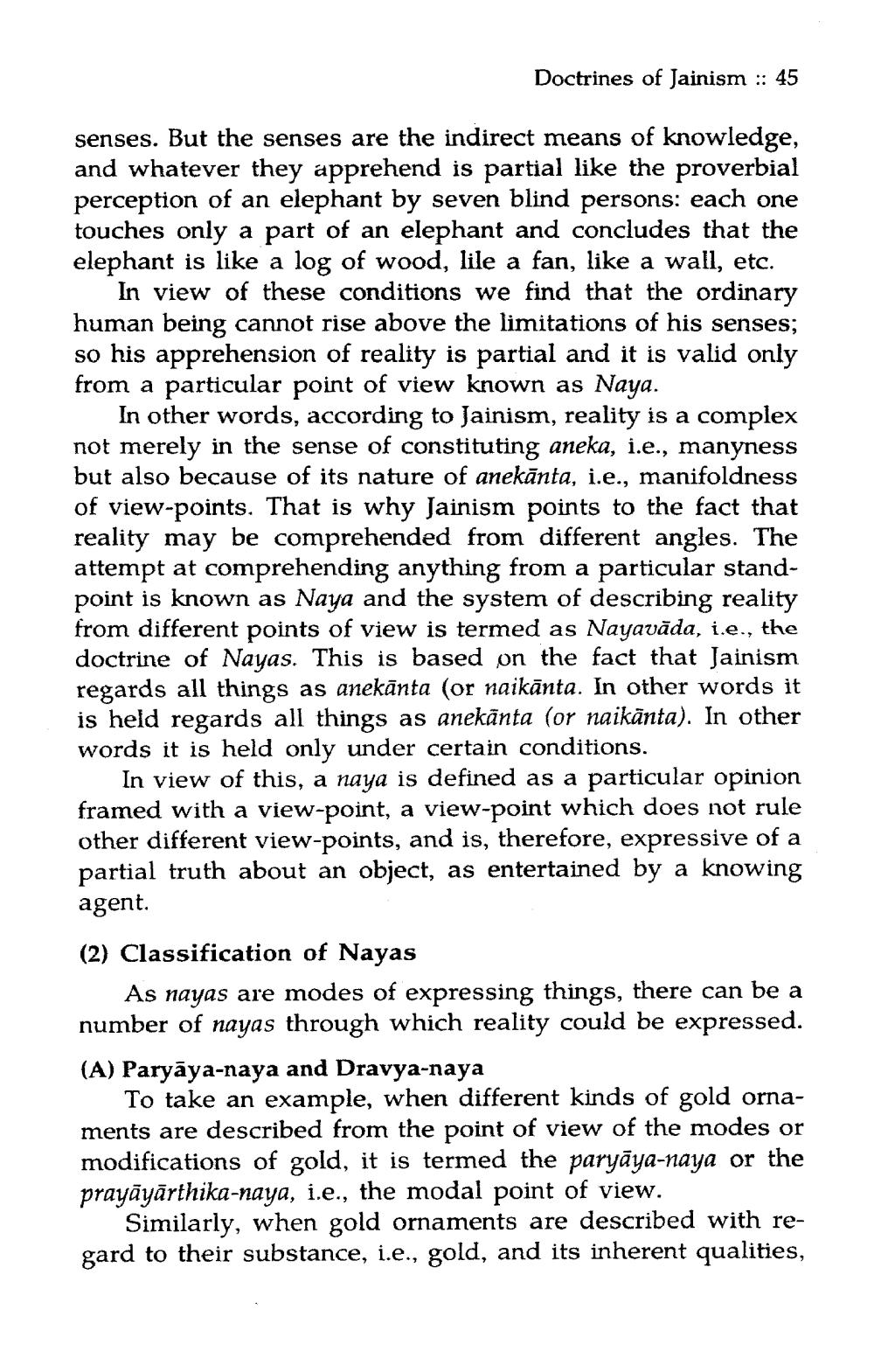________________
Doctrines of Jainism :: 45
senses. But the senses are the indirect means of knowledge, and whatever they apprehend is partial like the proverbial perception of an elephant by seven blind persons: each one touches only a part of an elephant and concludes that the elephant is like a log of wood, lile a fan, like a wall, etc.
In view of these conditions we find that the ordinary human being cannot rise above the limitations of his senses; so his apprehension of reality is partial and it is valid only from a particular point of view known as Naya.
In other words, according to Jainism, reality is a complex not merely in the sense of constituting aneka, i.e., manyness but also because of its nature of anekānta, i.e., manifoldness of view-points. That is why Jainism points to the fact that reality may be comprehended from different angles. The attempt at comprehending anything from a particular standpoint is known as Naya and the system of describing reality from different points of view is termed as Nayavāda, i.e., the doctrine of Nayas. This is based on the fact that Jainism regards all things as anekānta (or naikānta. In other words it is held regards all things as anekānta (or naikānta). In other words it is held only under certain conditions.
In view of this, a naya is defined as a particular opinion framed with a view-point, a view-point which does not rule other different view-points, and is, therefore, expressive of a partial truth about an object, as entertained by a knowing agent.
(2) Classification of Nayas
As nayas are modes of expressing things, there can be a number of nayas through which reality could be expressed. (A) Paryāya-naya and Dravya-naya
To take an example, when different kinds of gold ornaments are described from the point of view of the modes or modifications of gold, it is termed the paryāya-naya or the prayāyārthika-naya, i.e., the modal point of view.
Similarly, when gold ornaments are described with regard to their substance, i.e., gold, and its inherent qualities,




